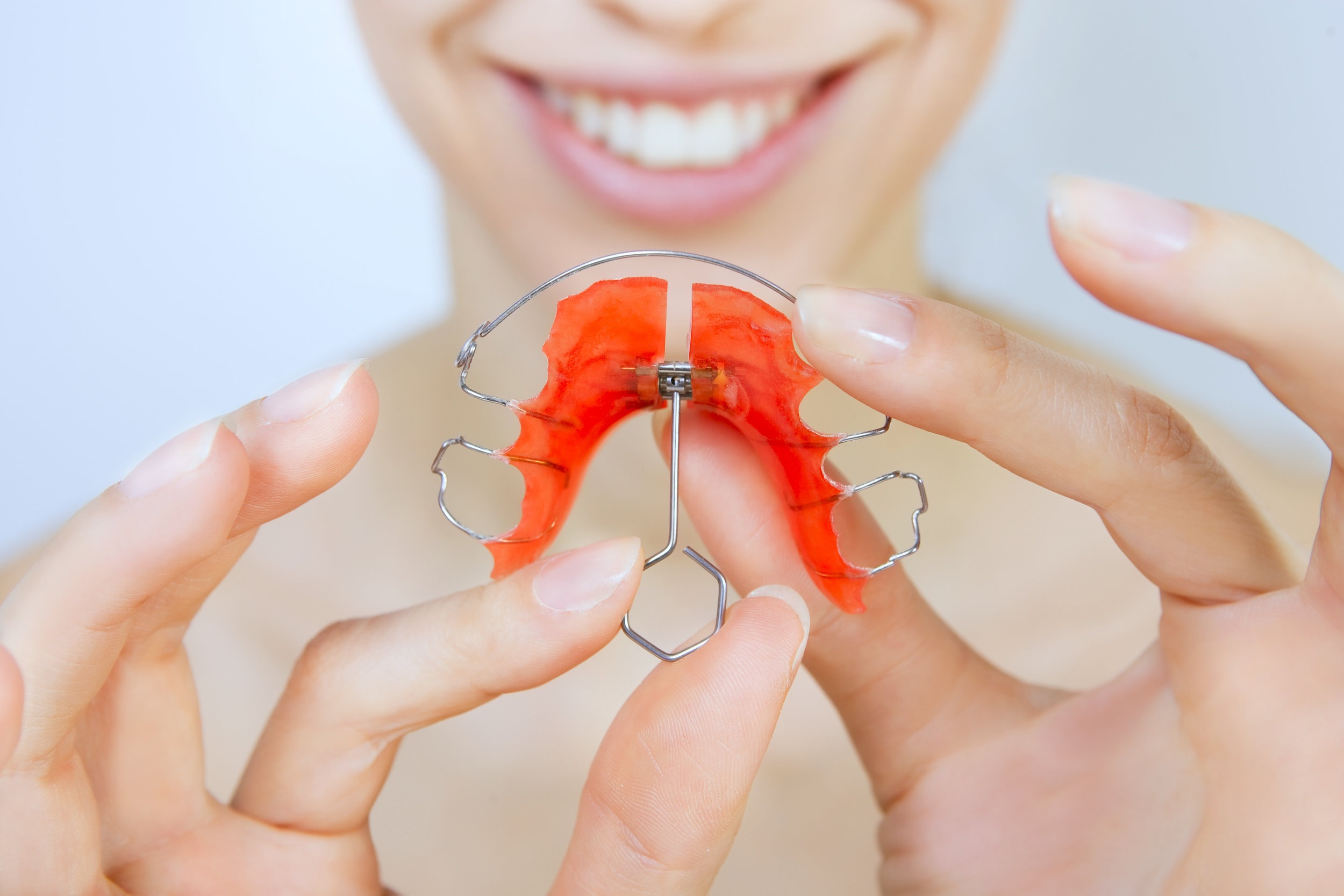A very common orthodontic appliance used in orthodontic treatment, especially in younger children, is called an expander. There are different brand names or type of expanders that exist now, each with their own different mechanism of how they work. Some are fixed (or “glued”) to a child’s teeth for a period of time to prevent unwanted removal from the child. There are others that are intended to be removed from time to time. There are some that rely on a parent to help with expansion aspect and some expanders that either have a built-in spring or the orthodontist adjusts the expander. Each of these expanders has pros and cons to them, but they all have the same general goal- to move upper teeth outward to eliminate crowding and correct crossbites (if present), especially in growing patients.
Expanders are more helpful in growing patients because there is a growth plate in the middle of the roof of your child’s mouth that does not fuse (or stop growing) until usually around 13-16 years old, depending on the child. So, by using an expander, we can take advantage of the growth plate to create space for the adult teeth to erupt into place or help correct some bite issues (if present).
Some things for parents to know about an expander:
There is usually some discomfort when an expander is initially placed (because there hasn’t been anything in the child’s mouth before) and there is an adaptation period.
How long does it take for a child to adapt to it? Usually around a couple of days for your child to learn how to talk, eat and clean his or her teeth while wearing the expander. The only thing patients feel during treatment is a little pressure on the upper teeth, behind their nose and/or in the roof of their mouth when their expander is working. The pressure usually goes away relatively quickly.
In addition to the pressure that can be felt by your child, speech and dietary restrictions may change during the use of an expander. Again, this usually temporary as your child adjusts to having an expander in their mouth.
A good sign that the expander is working, that can be sometimes alarming, is the appearance of a space between the front two teeth during the expander use. While this can be surprising when it first appears, this is a result of the expander opening the suture (or growth plate) in the roof of your child’s mouth. The front teeth will slowly drift together over time once the expansion has been stopped. (They will not automatically become straight, but the space will eventually close between the front two teeth).
Some tips for helping your child through the first couple of days include:
· a softer diet (ice cream, smoothies, yogurt, pudding, soup, milkshakes, etc.)
· avoiding sticky, chewy foods- these have the potential to dislodge the expander, reduce its effectiveness and increase the time with the expander. These foods can also get stuck in the expander and prevent it from working properly
· Whatever your child takes for headaches can also be appropriate for the first couple of days (only as needed). Please ask your orthodontist if this is the right course of action for you and your child
One additional note: expanders often need to be kept in your child’s mouth after the space is created to prevent the teeth from going back to their original position and rendering the treatment null. This is often a stabilization or holding phase that can last several months. Your orthodontist can give you more indications as to how long this phase will last. They can give you more specifics to the treatment plan as well.
Have any questions? I’m happy to help. Please feel free to call us.

